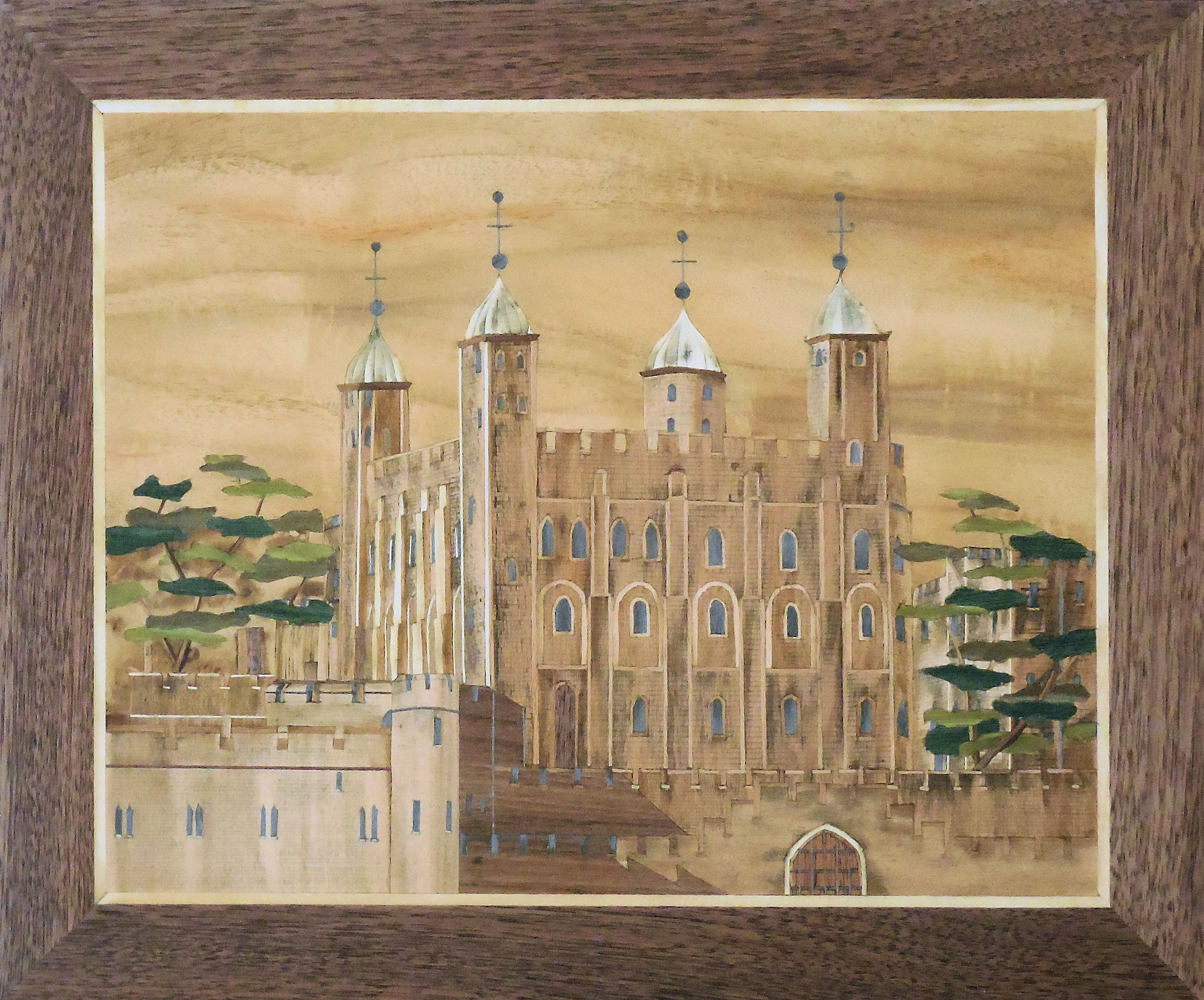| Marquetry Magic |
| Artist ~ Ernest Mills ~ |
| Index | Tutorials | Marquetry Index | Covered Bridge | Miniatures | Applied | My Woodwork | Marquetarian Art |
| The Tower of London |
| 13-1/4” (33.6 cm) x 11" (27.99 cm) |
| Second entry in the 2023 AMS (American Marquetry Society) |
 |
|
History Construction of the Tower of London was initiated in 1070 by William the Conqueror, shortly after his victory at Hastings in 1066. The Tower was built to enforce the power of the Norman king over the newly conquered land. The fortress, strategically located at the Thames, was originally not more than a temporary wooden building, which was replaced later by the White Tower. Over time, the complex was expanded into a stronghold with about twenty towers. Today the Tower of London is best known for its Crown Jewels, but it used to be notorious for the many political opponents of the kings that were locked, tortured and killed in the Tower. What happened to the two Princes, Edward and Richard, both disappeared in the Tower ? and remember, three Queens were executed here. The Tower was also a royal residence: several kings lived here, especially during turbulent times, when the dungeon seemed a lot safer than the palace in Westminster. The oldest part of the fortress is the so-called White Tower, which was completed in 1097. This keep was long the tallest building in London at 27.4 meters (90ft). Its walls are 4.6 meter wide. The tower was whitewashed during the reign of Henry III, which gave the tower’s facade its white appearance. Ever since, the tower has been known as White Tower. The building has four domed turrets at each corner. Three of them have a square shape, the other is round, due to its spiral staircase. The round turret was long used as an observatory. Artists Comments This piece measures 13-1/4” (33.6 cm) x 9-1/8" (23.2 cm) and was pressed onto a piece of 1/2” Balsamic Birch plywood, and backed by a composite of Walnut veneer. It was sanded with 220 grid then 6 coats of sanding sealer were applied. Between each application the surface was wet and dry sanded with 600 grid using a flat block. It was 100% Scalpel cut. It was finished with 3 coats of wipe on Satin Polyurethane varnish and finally polished with Renaissance wax. All photos I saw of the Tower showed the tower pristine and well kept always with a clear blue sky. I wanted it to reflect the prisoner strife and executions carried out in the Tower. The sky I tried to show as somewhat unrested and the texture of the brickwork smudged, darker and reflective of its past. I had to experiment to get the brick wall finish as seen on all photos. To achive this I horizontally scored all tower, wall and brick surfaces, cutting about 0.010" into the veneer and scored lines being about 1 to 2 mm apart. Then using the scalpel point I jabbed it vertically along and between the scraped lines. With this done and using a soft leaded pencil, scraped very fine graphitwead paricles onto the walls and towers. With a soft bristle brush I managed to brush a lot the graphite particles into the scraped line. The bonus with this came as it appeared to satisfy its dark side. |
| Index | Tutorials | Marquetry Index | Covered Bridge | Miniatures | Applied | My Woodwork | Marquetarian Art |